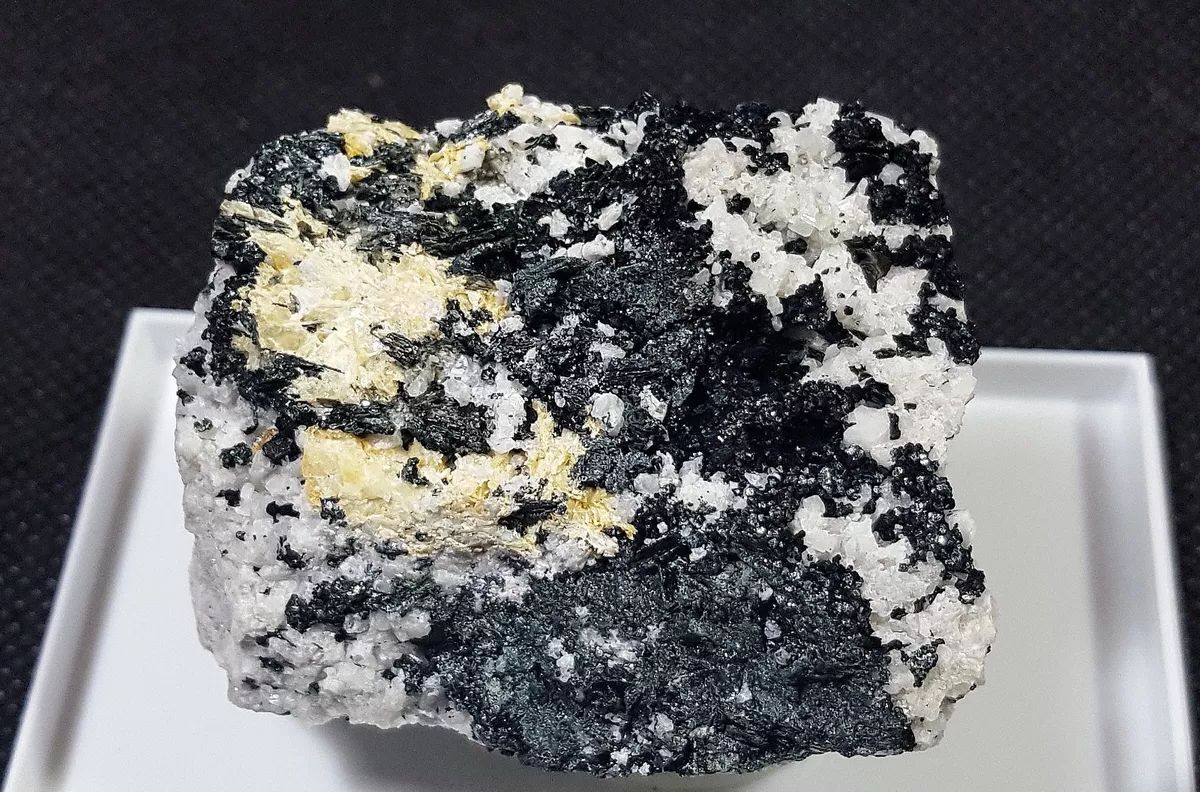
Asbecasite is a rare mineral that sparks curiosity among geology enthusiasts. Found primarily in the Kola Peninsula, Russia, this mineral boasts a unique composition of calcium, titanium, silicon, and oxygen. But what makes Asbecasite so special? Its distinct crystal structure and vibrant colors set it apart from more common minerals. Often appearing in shades of yellow, brown, or green, Asbecasite crystals can captivate anyone lucky enough to encounter them. Want to know more? This post dives into 30 intriguing facts about Asbecasite, shedding light on its formation, properties, and uses. Whether you're a seasoned geologist or just starting your mineral collection, these facts will enrich your understanding of this fascinating mineral.
Key Takeaways:
- Asbecasite is a rare mineral with a unique chemical composition, found in specific locations around the world. It has potential applications in material science and can be used to study arsenic contamination in the environment.
- Asbecasite, a collector's mineral, has a fascinating history and is often associated with other rare minerals like beryl and phenakite. It can also be used as an educational tool to teach about mineral formation and properties.
What is Asbecasite?
Asbecasite is a rare mineral that intrigues geologists and mineral enthusiasts alike. Found in specific locations around the world, it has unique properties and a fascinating history. Let's dive into some captivating facts about this mineral.
-
Asbecasite is a rare silicate mineral that contains arsenic, beryllium, and calcium.
-
It was first discovered in Switzerland in the early 20th century.
-
The mineral is named after its chemical composition: arsenic (As), beryllium (Be), calcium (Ca), and silicon (Si).
-
Asbecasite typically forms in granite pegmatites, which are coarse-grained igneous rocks.
-
It has a hexagonal crystal system, meaning its crystals are shaped like hexagons.
Physical Properties of Asbecasite
Understanding the physical properties of asbecasite can help identify it in the field. Here are some key characteristics.
-
Asbecasite has a hardness of 5 on the Mohs scale, making it relatively soft compared to other minerals.
-
Its specific gravity ranges from 3.2 to 3.4, indicating it is denser than average rocks.
-
The mineral exhibits a vitreous to greasy luster, giving it a shiny or oily appearance.
-
Asbecasite is usually colorless or white, but impurities can give it a yellowish or greenish tint.
-
It has a perfect cleavage in one direction, meaning it breaks smoothly along a specific plane.
Chemical Composition and Structure
The chemical makeup and structure of asbecasite are what make it unique. Let's explore these aspects.
-
The chemical formula for asbecasite is Ca3Be2(AsO4)3(OH).
-
It contains arsenic, which is a toxic element, so handling it requires care.
-
Asbecasite's structure includes tetrahedral units of silicon and arsenic, linked by beryllium and calcium atoms.
-
The mineral is part of the apatite group, which includes other minerals with similar structures.
-
Asbecasite can form solid solutions with other minerals, meaning its composition can vary slightly.
Occurrence and Locations
Asbecasite is not found everywhere. Its occurrence is limited to specific geological settings.
-
The primary location for asbecasite is the Alps in Switzerland.
-
It has also been found in Russia, particularly in the Kola Peninsula.
-
Small deposits exist in Canada, specifically in Quebec.
-
Asbecasite is often associated with other rare minerals like beryl and phenakite.
-
It forms in hydrothermal veins, which are cracks in rocks filled with mineral-rich water.
Uses and Applications
While asbecasite is not widely used, it has some interesting applications and significance.
-
Asbecasite is primarily a collector's mineral, prized by mineral enthusiasts.
-
Its unique composition makes it a subject of scientific research, particularly in mineralogy and crystallography.
-
Due to its arsenic content, asbecasite can be used to study arsenic contamination in the environment.
-
It has potential applications in material science, especially in developing new materials with unique properties.
-
Asbecasite can be used as an educational tool to teach about mineral formation and properties.
Fun and Lesser-Known Facts
Here are some fun and lesser-known facts about asbecasite that might surprise you.
-
Asbecasite crystals can grow up to several centimeters in length, although they are usually smaller.
-
The mineral is often found in association with fluorite, another colorful and popular mineral.
-
Asbecasite's name is sometimes misspelled as "asbecasite" due to its complex composition.
-
It is considered a rare mineral, with only a few known specimens in existence.
-
Asbecasite has a unique fluorescence, glowing under ultraviolet light due to its chemical composition.
Asbecasite: A Hidden Gem
Asbecasite, a rare mineral, holds a treasure trove of fascinating facts. Found mainly in Switzerland, this mineral's unique composition includes calcium, titanium, and niobium. Its striking yellow-green color makes it a standout among collectors and geologists alike. Despite its rarity, asbecasite has been studied for its potential industrial applications, particularly in electronics due to its unique properties.
Understanding asbecasite's formation and characteristics can provide insights into geological processes and mineralogy. Its discovery in the Swiss Alps highlights the region's rich geological diversity. For those passionate about minerals, asbecasite represents a captivating subject of study and collection.
In short, asbecasite isn't just a pretty face in the mineral world; it's a testament to the Earth's incredible natural processes. Whether you're a seasoned geologist or a curious enthusiast, asbecasite offers a glimpse into the wonders hidden beneath our feet.
Frequently Asked Questions
Was this page helpful?
Our commitment to delivering trustworthy and engaging content is at the heart of what we do. Each fact on our site is contributed by real users like you, bringing a wealth of diverse insights and information. To ensure the highest standards of accuracy and reliability, our dedicated editors meticulously review each submission. This process guarantees that the facts we share are not only fascinating but also credible. Trust in our commitment to quality and authenticity as you explore and learn with us.


